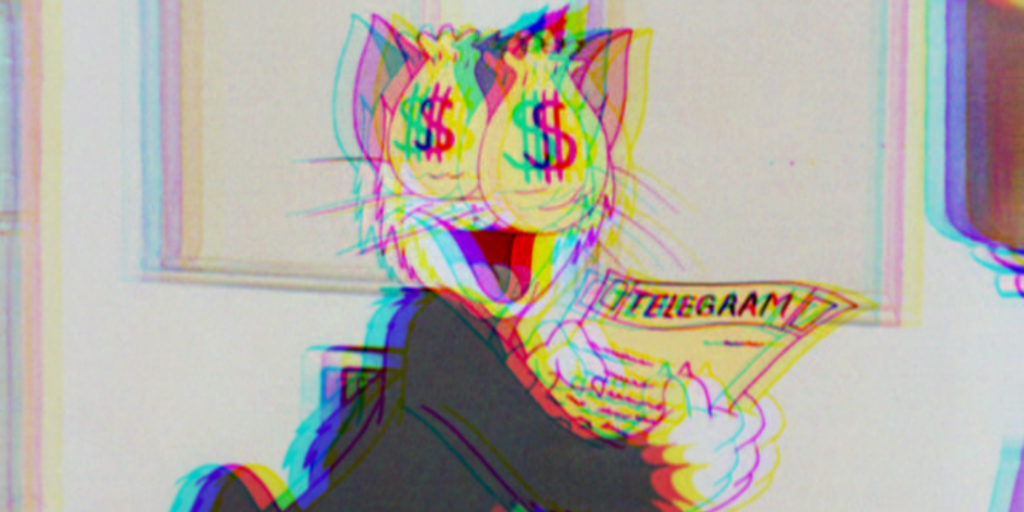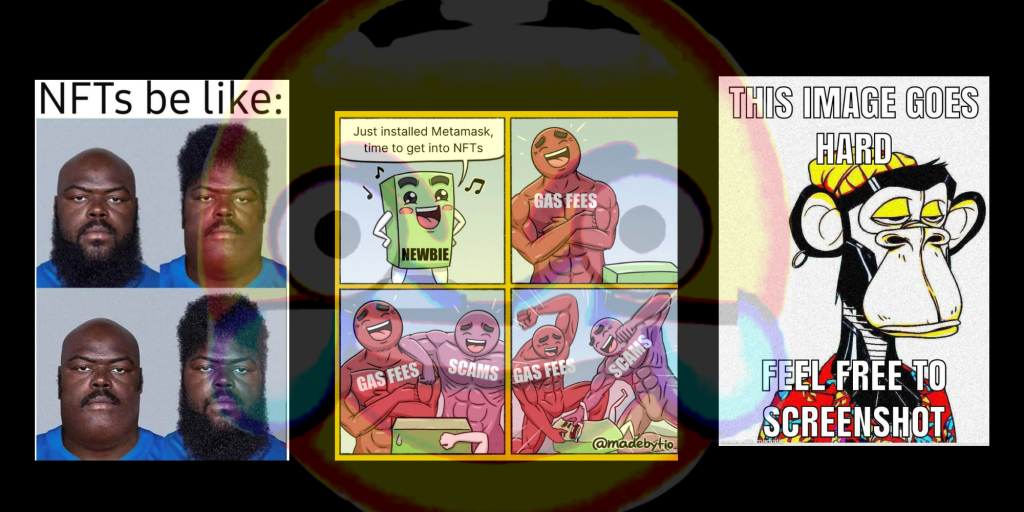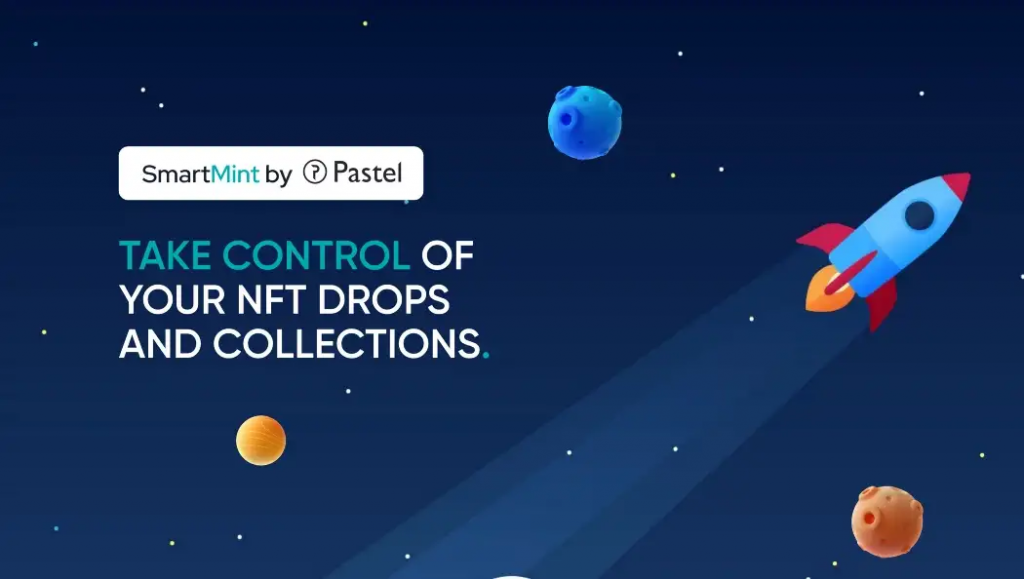NFT royalties are payments sent to the creator of an NFT each time it is resold on the secondary market. NFT royalties function similarly to traditional royalties. In business, for example, the owner of a product receives a percentage of the sales or profits.
In the case of NFTs, the creator can set the royalty percentage during the minting of the NFT.
So, while NFT royalties make it possible for an artist to earn recurring revenue on their work (as long as it’s being re-sold in secondary markets), they’ve been a point of dispute for the various parties.
The following guide explores how NFT royalties work and more.
How Do NFT Royalties Work?
NFT royalties are calculated as a percentage of the sales price specified by the creator. However, this is not a standardized method as each NFT marketplace, like OpenSea and LooksRare, will use different smart contracts to calculate and handle NFT royalties. If the royalty fee calculation ends in a remainder, it can be rounded up or down to 5 or 10 percent.
Royalties apply to almost any type of NFT, whether physical or digital. These can be in-game items and collectibles from blockchain games, artwork, PFPs, tokenized music albums, videos, etc.
The underlying smart contract makes sure the process of each secondary sale is carried out accordingly, depending on the platform. After the sale is verified, the smart contract reserves a percentage, delivering it to the creator’s cryptocurrency wallet. The currency of payment is usually the one supported by the platform. For example, OpenSea supports Ethereum and Polygon, an Ethereum sidechain, so the internal economy runs using ETH.
The percentage of the price sale is pre-defined by the creator, typically 5% – 10%, and this is predefined in the minting stage. So, whenever you buy an NFT directly from the person or project who created it, and then you re-sell it, 5% or 10% of that secondary sale goes to the creator. It’s similar to a company’s shares being traded in the stock market after being sold in an Initial Public Offering (IPO).
An NFT will have a royalty percentage fixed. Some people may think that royalties fluctuate with the market; it’s actually the sale price of the NFT that varies through time and therefore causes variations in the amount of profits creators receive. Price fluctuation will depend on multiple factors, most commonly: market demand, scarcity, and utility.
Why Are NFT Royalties Important?
NFT royalties are a way for digital creators to capitalize on the value of their work through secondary sales. No matter who owns the NFT, a smart contract will ensure the creator receives its fair share.
It’s not just about the minting price; NFT royalties are an appealing (and necessary) source of income for creators. Last year, over $1.8 billion worth of royalties were paid out to creators of Ethereum-based NFTs.
Depending on how well an NFT or a collection is sold, royalties can generate a substantial amount of profits in the long run. In 2021, Beeple, a popular NFT artist, launched an NFT artwork called Crossroads and received around $6.6 million in royalties.
Pros and Cons of Royalties
NFT royalties, while at first glance can be a simple concept, have become a frustrating topic for marketplaces, creators, and buyers; all clashing on how to properly define the sale process so each party benefits somehow. This caused marketplaces and NFT platforms to devise and employ new royalty methods, such as optional creator earnings (explored in the section below).
First, NFT royalties allow artists to generate passive income while their work is being sold in secondary markets. It also gives creators an idea of how much value their NFT is garnering through time. The more popularity it acquires in the market, the creator’s reputation strengthens —most likely.
In the case of Beeple, for example, “Everydays – The First 5000 Days†became the artist’s most well-known work of art, selling for $69 million. His subsequent work didn’t need much promotion as he already established a name in the community, helping him profit millions in royalties from secondary sales.
The cons of NFT royalties would be the price volatility —digital creators cannot expect a steady stream of income from royalties as NFT prices could (and most likely will) fluctuate in short periods of time.
Also, some NFT traders that want to speculate resales don’t like the idea of paying a fair share to creators. In 2022, some NFT marketplaces like X2Y2 eliminated royalties from their platforms and instead enforced optional royalties, which outraged digital artists and caused a sharp decline in trading volume.
Optional Royalties
Optional royalties, or optional creator earnings, allow NFT owners to choose whether or not they want to pay creators a percentage each time they sell their NFTs. In 2023, several NFT marketplaces jumped on this trend, like OpenSea and LooksRare.
LooksRare eliminated default royalties and now grants optional royalties. This means buyers can choose to pay royalties at checkout, making NFT trading more profitable. However, the platform distributes 25% of platform fees to creators and collection owners.
Other NFT marketplaces can provide different types of NFT royalty systems. For example, Ditto Music allows fans to acquire shares in songs from their favorite bands and get paid monthly royalties via Bluebox, the company’s blockchain platform.
Popular NFT Marketplaces Offering Royalties
Not all NFT marketplaces offer NFT royalties. Here’s a quick list of the most popular platforms with the best royalties:
- OpenSea: the largest NFT marketplace by volume, offers optional royalties with 0.5% as the minimum for the creator.
- LooksRare: offers optional royalties, while creators will automatically receive 25% of trading fees.
- Nifty Gateway: enforced royalties; the marketplace takes 5% of the sale price plus 30 cents to cover credit card processing fees.
- Rarible: enforced royalties; the marketplace takes 1% on the seller side and 1% from the buyer side for service fees.
- SuperRare: enforced royalties; the marketplace takes 15% of the primary sale. Each secondary sale will distribute 90% of the sale to the collector, and the original artist receives a minimum of 10% as a royalty.
Final Thoughts: The Future of NFT Royalties
NFT royalties have been a fairly contentious topic lately. Marketplaces, artists, and collectors alike have differing opinions when discussing an ideal royalty system that benefits all the parties involved. However, NFT royalties have helped all kinds of artists globally create a better source of revenue for their work.Â
In the art world, royalties are a way to protect artists from having their work unjustly sold without giving them a fair share of the profit. In NFT music, for example, royalties play a slightly different role. NFT albums have become a popular way for artists to sell 99.9% of their work to fans while giving them a small percentage as royalty. This not only allows a broader connection between the artist and the fans but also eliminates intermediaries, like music labels, who take a considerable cut of their revenue.









